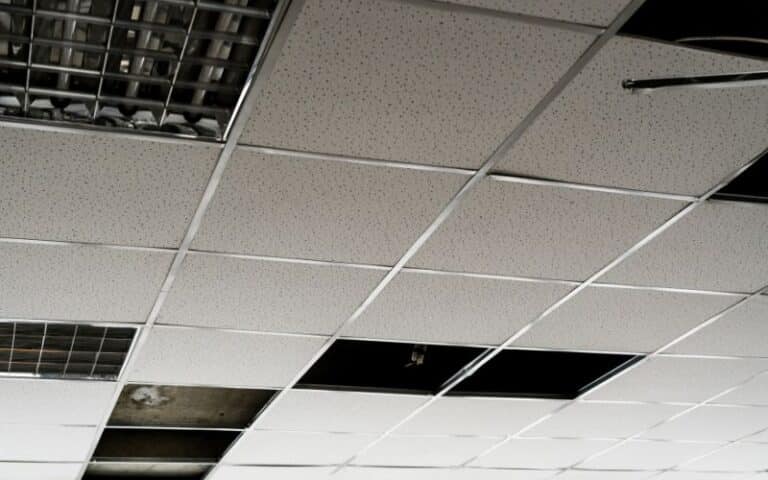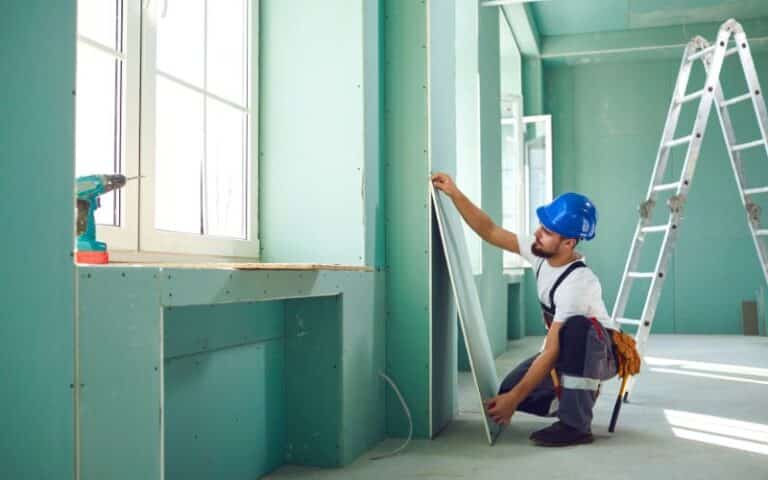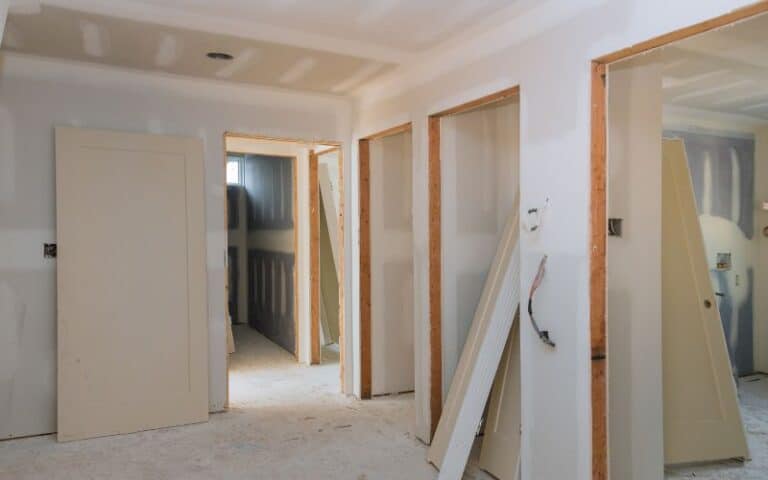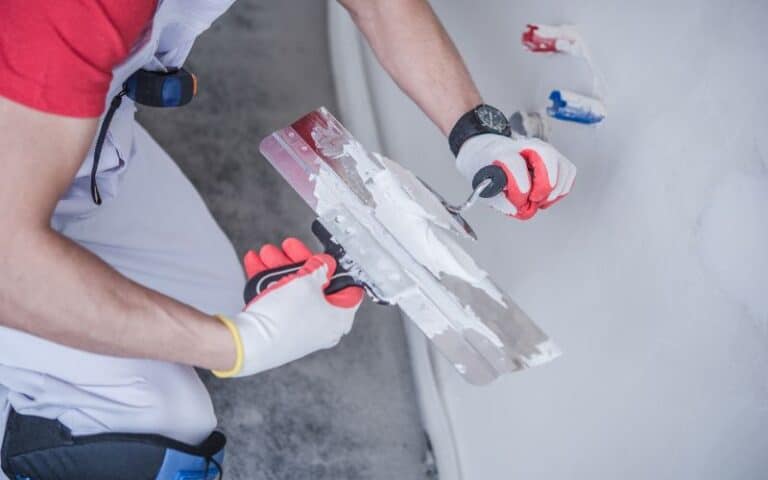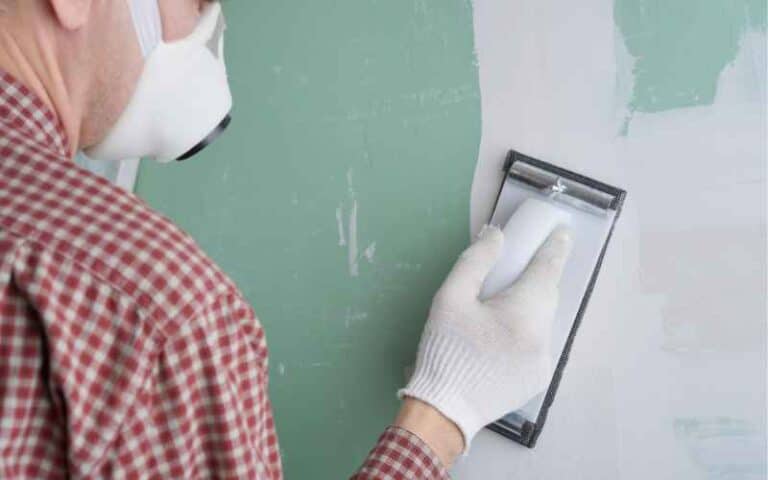If you cannot use a wall stud for installing your shelf, it’s always a good idea to use additional hardware for more stability. Thus, you may be confused about the tools to achieve this firmness.
And in this article, you’ll learn the basics of using drywall screws for securing wood to wood, the right size of drywall screws to use, etc.
Yes, you can use drywall screws to fasten shelves to walls. However, it’s always best to use wood screws if you’re installing shelves into the wood. That is because drywall screws are of hardened, brittle steel. So the shaft can break easily if put under a lot of pressure.
Securing drywall screws to shelves can be difficult, especially for a first-timer.
However, by the end of this article, it’s guaranteed that you’ll be able to identify the right screws to use for your shelves and how to install them.
Ready for a Drywall Quiz?
Can You Use Drywall Screws on Shelves?

Yes, you can use drywall screws on shelves. Drywall screws provide a secure hold in drywall and other lightweight materials.
So, you can use them to attach shelves to walls. However, it’s important to use the correct size and type of screw for the weight of the shelf you’re attaching.
For heavier shelves, wood screws are best to provide greater strength and stability. Thus, while you can use drywall screws on shelves, it’s generally not advised.
Drywall screws are made specifically for use with drywall, which is a relatively soft and lightweight material.
Conversely, shelves hold heavier objects and require more secure fastening methods.
Using drywall screws on shelves can result in a weak and unstable attachment, which could be dangerous if the shelf falls or collapses.
That is because they’re not strong enough to hold the weight of a shelf and its contents, and their threads aren’t suitable for use in wood and other materials.
Additionally, drywall screws may not be long enough to penetrate deep enough into the wall studs or supports, which could also compromise the strength and stability of the shelf.
So, it’s best to use screws and anchors specifically designed for shelves or other heavy-duty applications.
And to follow the manufacturer’s instructions carefully to ensure a safe and secure installation.
Additionally, the heads of drywall screws can’t hold the weight of a shelf and its contents.
To properly secure a shelf, you should use screws designed for wood, such as wood screws or wall anchors designed to hold a heavier weight.
What Screws Can You Use to Attach Shelves to Drywall?
Special drywall anchors are the best type of screws for attaching shelves to drywall. They can effectively hold shelves securely in place on drywall.
These anchors come in various sizes, and the size you choose will depend on the weight of the shelf and the type of wall material you are attaching it to.
Generally, a #8 or #10 size drywall anchor is suitable for most shelf applications.
Additionally, you can use wood screws or sheet metal screws to secure the shelf, but these are not as strong as drywall anchors and may not provide as secure of a hold.
When attaching shelves to drywall, you’ll need to use screws designed for this purpose.
Here are some types of screws you can use:
#1. Drywall Anchors
You can use plastic or metal drywall anchors to attach shelves to drywall. These anchors expand when you screw them into the drywall, providing a stronghold.
You can then screw the shelf brackets into the anchors.
#2. Toggle Bolts
Toggle bolts are another option for attaching shelves to drywall. They consist of a bolt and a butterfly-shaped toggle that expands behind the drywall when the bolt tightens.
These can support more weight than drywall anchors but are more difficult to install.
#3. Wood Screws
If the shelf brackets are wooden, you can use wood screws to attach them directly to the drywall.
Ensure the screws are long enough to reach the studs behind the drywall for added support.
Choosing the right screw for the weight and size of your shelves is important to ensure a secure and safe installation.
It’s always a good idea to consult a hardware expert or professional installer if you are unsure which screws to use.
What Size Screw Should I use for Hanging Shelves?
The size of the screw you should use for hanging shelves depends on the type of wall and the weight of the shelf.
That said, here’s a tabular representation for better context:
| Screw Size type and size | Where to Use |
|---|---|
| #6 or #8 flat head (1-1/4 to 1-3/8 inches long) | Lighter shelves |
| #8 or #10 flathead (1-3/8 to 1-5/8 inches long) | Heavier shelves |
| Lead anchors are best (size will depend on the type of shelf) | Hanging shelves on concrete or cinder block |
| Anchors of 1/4 inch wide | Anchors |
The size of the screw you should use for hanging shelves will depend on several factors. Such as the weight of the shelf and the type of wall material you are attaching it to.
Generally, for drywall or plasterboard, you will want to use screws that are at least 1.5 inches long and have a diameter of at least 1/8 inch.
However, if the shelf is particularly heavy, you may need longer or thicker screws.
If you’re attaching the shelf to a stud, you can use shorter screws, such as 1 to 1.25 inches, since they will be more secure.
Nevertheless, consulting the manufacturer’s instructions is always a good idea. Or, consult with a hardware store professional for specific recommendations based on your needs.
What is Drywall Screws Good for?
Drywall screws are best for attaching drywall to wood or metal studs. As well as attaching other materials such as plywood, paneling, and insulation.
They’re also suitable for attaching lightweight objects like electrical boxes, light fixtures, and light switch plates.
Drywall screws are much better than nails for these applications because they are much stronger and less likely to come loose or pull out.
Additionally, they’re easier to drive into the wall and leave a much smaller hole than nails do. Also, you can use drywall screws for attaching drywall panels to wood or metal framing.
They’re typically made of hardened steel and feature a coarse thread that allows them to grip the drywall securely without causing the material to crack or split.
Drywall screws come in various lengths, typically 1 inch to 3 inches. With longer screws, you can use them for thicker drywall or when attaching drywall to thicker framing members.
They’re often coated with a corrosion-resistant material, such as zinc or phosphate, to prevent rusting.
Apart from attaching drywall, you can also use drywall screws for other purposes, such as:
- Attaching plasterboard or gypsum board to wood or metal framing
- Securing wood trim and molding to walls and ceilings
- Installing cabinetry and shelving
- Building furniture and other woodworking projects
- Joining metal sheets together in HVAC and electrical installations.
However, here are a few instances where drywall screws may not be the best choice:
#1. Heavy-duty Construction
You shouldn’t use drywall screws to hold significant weight or support heavy loads.
For this type of application, other fasteners, such as lag bolts or specialized framing screws, may be more appropriate.
#2. Outdoor Use
Drywall screws aren’t intended for outdoor applications as they are prone to rusting and corrosion.
Stainless steel screws are a better option for outdoor use. However, they may not be the best choice in all situations.
#3. Attaching Metal to Wood
When attaching metal to wood, drywall screws may not be strong enough to securely hold the two materials together.
Self-tapping screws designed specifically for metal-to-wood applications may be a better option.
#4. High-stress or tension situations
In high-stress situations, such as securing joists or beams, specialized screws or bolts are necessary to ensure proper support and load-bearing capacity.
While drywall screws are versatile and useful in many situations, it’s important to use the right fastener for the job to ensure proper strength and durability
Finally, drywall screws are an essential component for any drywall installation project.
Also, you can use them in various other construction and woodworking applications.

